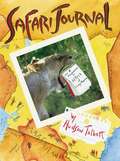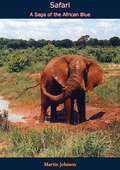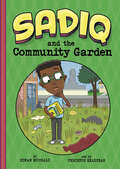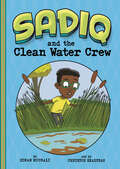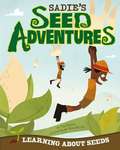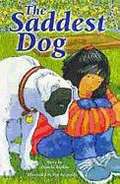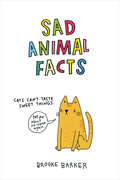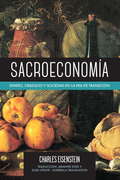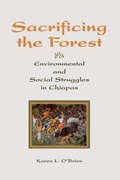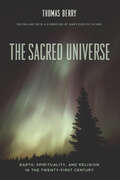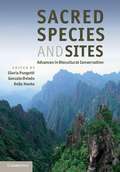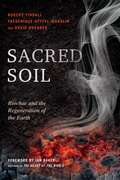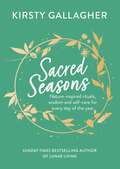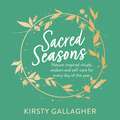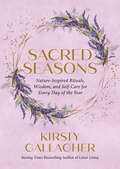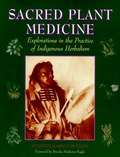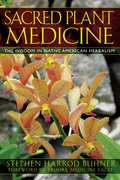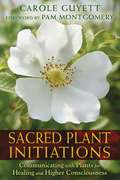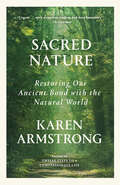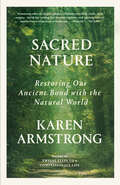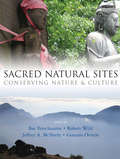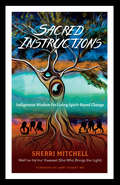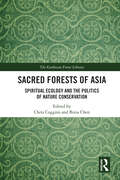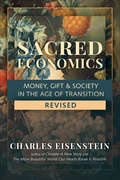- Table View
- List View
Safari Journal: The Adventures in Africa of Carey Monroe
by Hudson TalbottTwelve-year-old Carey Monroe has no idea what he's in for when his wacky aunt Elaine drags him along on an African safari. Soon after arriving in Kenya, Carey meets a Maasai man and his son, who open Carey's eyes to the ways of their people and the beauty of the African landscape and wildlife. Their adventures turn suspenseful when they encounter an international poaching ring that trades illegally in rhino horns and elephant tusks. Explore the world of the Maasai people at Carey's side by reading his journal, filled with his vivid accounts, photographs, and illustrations. Hudson Talbott has created an exciting, informative safari story that will fascinate readers of all ages. An author's note provides cultural context for Carey's adventures.
Safari: A Saga of the African Blue
by Martin JohnsonAnother captivating book by the American adventurer and documentary filmmaker, Martin Johnson, with 66 illustrations.
Sadiq and the Community Garden (Sadiq)
by Siman NuuraliOn the way to the library, Sadiq and his family pass an empty lot in their neighborhood. It looks like it could use some attention. Sadiq and his brothers and sisters come up with ideas for what the lot could be. A playground? A skatepark? Then a science unit about plants at school gives Sadiq and Hooyo another idea—a community garden! But where to begin? And how to get people involved? It’s up to Sadiq and his classmates to “dig in” and make the community garden a success!
Sadiq and the Clean Water Crew (Sadiq)
by Siman NuuraliMs. Battersby’s class is heading to the pond for a field trip. They hope to see birds, bugs, fish, and turtles! But one thing Sadiq sees makes him worried—dead fish! What happened to them? This question leads Sadiq on a mission to solve the mystery. When he discovers that the problem is likely polluted water, Sadiq and his friends form the Clean Water Crew! But what can kids do to help clean up bodies of water? Join Sadiq’s Clean Water Crew to find out!
Sadie's Seed Adventures: Learning About Seeds
by Tina DybvikSadie and Gardener Marv set out to clear weeds from a garden plot. While working, they go on a magical adventure to learn all about seeds. From hitching a ride with a cocklebur to flying through the sky with a milkweed seed, join Sadie as she figures out how seeds disperse.
The Saddest Dog (Rigby PM Plus Non Fiction Ruby (Levels 27-28), Fountas & Pinnell Select Collections Grade 3 Level Q)
by Pamela RushbyOne morning, a dog appears in Kim's backyard. He's a nice dog, but he seems very sad. "He'll probably go home soon," says Mom. But he doesn't. Kim and Mom set out to find the dog's owners. But Kim likes having a dog. She's secretly hoping that his owners never show up.
Sad Animal Facts
by Brooke BarkerA delightful and quirky compendium of the Animal Kingdom's more unfortunate truths, with over 150 hand-drawn illustrations.Ever wonder what a mayfly thinks of its one-day lifespan? (They're curious what a sunset is.) Or how a jellyfish feels about not having a heart? (Sorry, but they're not sorry.)This melancholy menagerie pairs the more unsavory facts of animal life with their hilarious thoughts and reactions. Sneakily informative, and wildly witty, SAD ANIMAL FACTS will have you crying with laughter.
Sacroeconomía
by Susa Oñate Arianne Sved Charles EisensteinSacroeconomía analiza la historia del dinero desde las antiguas economías del obsequio hasta el capitalismo moderno, revelando hasta qué punto el sistema monetario ha contribuido a la alienación, la competencia y la escasez, ha destruido el sentimiento de comunidad y ha obligado al crecimiento ilimitado. Estas tendencias han llegado a su extremo hoy en día. Sin embargo, tras su derrumbe podríamos hallar una gran oportunidad para acometer la transición hacia un modo de ser más interconectado, ecológico y sostenible. Este libro trata de la transformación que deberá experimentar --y que ya experimenta-- el sistema monetario para encarnar dicha transición. Sacroeconomía ofrece una síntesis amplia que integra teoría, políticas y prácticas, y examina conceptos vanguardistas de la Nueva Economía, entre ellos la moneda de interés negativo, la moneda local, la economía basada en los recursos, las economías del obsequio y la restauración del procomún. El autor, Charles Eisenstein, sopesa también las dimensiones personales de esta transición, dirigiéndose a quienes aspiran a un "modo de subsistencia correcto" y a vivir en consonancia con sus ideales en un mundo aparentemente gobernado por el dinero. Recurriendo a una larga tradición de pensamiento económico convencional y no convencional, Sacroeconomía presenta una visión original a la vez que sensata, radical a la vez que moderada; una visión de creciente relevancia ante la crisis, cada vez más profunda, de nuestra civilización.
Sacrificing The Forest: Environmental And Social Struggle In Chiapas
by Karen O'BrienThe Selva Lacandona of Chiapas, Mexico has received a tremendous amount of attention since the Zapatista uprising began in 1994. Concerns have focused on both the rapid rate of deforestation in Mexico's largest tropical rain forest and the social marginalization of its inhabitants, which is considered to be a root cause of the uprising. In this book, Karen O'Brien presents an insightful analysis of how deforestation and social struggles are related in this region and then considers the implications of these links for the remaining forest.A critical analysis of deforestation rates and patterns in the Selva Lacandona region provides the point of departure for this study. Using satellite imagery and her own field work, O'Brien presents an original estimate of forest loss. She then uses an approach derived from political ecology to trace the links between social processes and deforestation. Instead of focusing exclusively on the driving forces of deforestation, she argues that an analysis of the countervailing forces of conservation efforts is crucial to understanding the configuration of the present-day forest and the conflicts that surround it. Unless these forces can be fused, O'Brien contends, the future of the Selva Lacandona will continue to be shaped by the tensions among social, economic, and environmental objectives.A valuable tool for scholars of deforestation, environmental change, and political ecology, Sacrificing the Forest will also be of interest to readers trying to understand the current situation in Chiapas.
The Sacred Universe: Earth, Spirituality, and Religion in the Twenty-First Century
by Thomas Berry&“Dedicated readers of ecology, theology, or religious philosophy will want to savor each one [of these essays]&” from the renowned environmental thinker (Library Journal). A leading scholar, cultural historian, and Catholic priest who spent more than fifty years writing about our engagement with the Earth, Thomas Berry possessed prophetic insight into the rampant destruction of ecosystems and the extinction of species. In this book he makes a persuasive case for an interreligious dialogue that can better confront the environmental problems of the twenty-first century. These erudite and keenly sympathetic essays represent Berry&’s best work, covering such issues as human beings&’ modern alienation from nature and the possibilities of future, regenerative forms of religious experience. Asking that we create a new story of the universe and the emergence of the Earth within it, Berry resituates the human spirit within a sacred totality. &“This book addresses how the history and diversity of world religions offer ways to engage with Earth; how it is necessary to connect with a spirituality that is Earth derived; how science can be in conversation with the religious sensibilities of wonder and awe; and how our relationship to the natural world is crucial to our spirituality. In the earliest essays, Berry sounds most optimistic and urges readers to reconcile modern impulses and technology with religious traditions.&”—Publishers Weekly &“Thomas Berry demonstrates in these papers the qualities he calls for: humanist vision and imagination.&”—Resurgence
Sacred Species and Sites
by Della Hooke Gonzalo Oviedo Gloria PungettiIt is being increasingly recognised that cultural and biological diversity are deeply linked and that conservation programmes should take into account the ethical, cultural and spiritual values of nature. With contributions from a range of scholars, practitioners and spiritual leaders from around the world, this book provides new insights into biocultural diversity conservation. It explores sacred landscapes, sites, plants and animals from around the world to demonstrate the links between nature conservation and spiritual beliefs and traditions. Key conceptual topics are connected to case studies, as well as modern and ancient spiritual insights, guiding the reader through the various issues from fundamental theory and beliefs to practical applications. It looks forward to the biocultural agenda, providing guidelines for future research and practice and offering suggestions for improved integration of these values into policy, planning and management.
Sacred Soil: Biochar and the Regeneration of the Earth
by David Shearer Frederique Apffel-Marglin Ian Baker Robert TindallA fascinating description of how utilizing the biochar embedded in terra preta, the recently rediscovered sacred soil of the pre-Columbian peoples of the Amazon rainforest, can cut our dependency on petrochemicals, restore the health of our soils, remove carbon from our overheating atmosphere, and restore the planet to pre-industrial levels of atmospheric carbon by 2050. The authors show that the rediscovery of terra preta is an opportunity to move beyond the West’s tradition of plunder and genocide of the native civilizations of the Americas by offering an invitation to embrace the deeper mystery of the indigenous methods of inquiry and to participate in an animate cosmos that gave rise to such a powerful soil technology. Sacred Soil, in recognizing the need for biocultural regeneration, takes a multi-disciplinary approach to the phenomenon of biochar soils, utilizing mythopoeic, historical, anthropological, and scientific perspectives to embrace the deep past, the vexed present, and the prospectus for our future. Coming at this crucial juncture in human history, the potential resting in biochar is also an open doorway into the indigenous ways of knowing that enabled the pre-Columbian Amazonian high civilizations to support a population of millions while leaving their lands more fertile than when they arose.
Sacred Seasons: Nature-inspired rituals, wisdom and self-care for every day of the year
by Kirsty GallagherDo you want to live a life with more meaning, purpose and connection? In this inspirational handbook, moon mentor, soul alignment and spiritual coach, Kirsty Gallagher, takes us through the year season by season to help us reconnect with nature. Sacred Seasons shows us how to find balance and a deep connection with the seasons, the astrological cycles and the lunar phases in order to live well and thrive. Packed with nourishing moon rituals, crystals and altar set-ups, journal prompts and practices and Kirsty's trademark wisdom, Sacred Seasons will show you how to draw on inspiration from nature's events, including the Spring Equinox, the Summer Solstice, the Autumn Equinox and Imbolc. You'll learn about the Wheel of the Year and the best moments to pause and reflect and look inwards, as well as when to tap into your abundant energy and achieve all your goals. Live your best year yet with Sacred Seasons.
Sacred Seasons: Nature-inspired rituals, wisdom and self-care for every day of the year
by Kirsty GallagherJourney through the seasons and learn how to live in alignment with nature's cycles to live a happier, more intentional life.From the Sunday Times bestselling author Kirsty Gallagher comes Sacred Seasons - a guide to living in alignment with nature's cycles & seasonal celebrations.We live such busy lives and have completely lost touch with nature. This is a handbook for reconnecting back with nature's energy, wisdom and a natural way of living. It will make you more observant, pausing to take stock of each season and how it's making you feel so you can take care of yourself all year round.Packed with nourishing rituals, practices and Kirsty's trademark wisdom, Sacred Seasons will show you how to draw on inspiration from nature's events, including the spring equinox, the summer solstice, the autumn equinox and Imbolc.(P) 2023 Hodder & Stoughton Limited
Sacred Seasons: Nature-Inspired Rituals, Wisdom, and Self-Care for Every Day of the Year
by Kirsty GallagherNurture your best self throughout the year with this enchanted guide to living in alignment with nature's cycles from a Sunday Times bestselling author. Before clocks, seasons were the original calendar that cultures would use to survive and thrive! The essential magic of the natural world is available to us all, if we are open to living back in alignment with nature's flow. And experiencing this meaningful shift doesn&’t require a huge life overhaul—simple little daily changes and rituals honoring the turn of the seasons will make a huge difference in how we lead our lives. In Sacred Seasons bestselling author and moon mentor Kirsty Gallagher teaches us to embrace these moments of pause and ritual with nature. From solstices and equinoxes to festivals (Litha, Samhain, Imbolc) and the signature energies of each season, readers will learn to tap into the rhythms of the world to unlock the best within themselves. Organized by season (Spring, Summer, Fall, Winter), the chapters in this beautiful book offer opportunities for us to check in, catch up with ourselves, review our lives, make any necessary nature-inspired changes, and move forward into a new season with renewed clarity, direction, inspiration, purpose, and motivation. Living in alignment with nature in this way ensures that we are constantly evolving, renewing, releasing and growing, just like nature does.
Sacred Plant Medicine: Explorations in the Practice of Indigenous Herbalism
by Stephen H. BuhnerIn Sacred Plant Medicine Stephen Buhner examines how indigenous peoples throughout the world learned the use of plant medicines. He explores the sacred dimension of plant and human interactions--a territory where humans experience communications from plants as expressions of Spirit. Indigenous peoples were clear, and Buhner's firsthand accounts bear this out, they did not learn the uses of plant medicines through trial and error but directly from the plants themselves. Sacred Plant Medicine develops a map of the territory of plant intelligence and the human interaction with it by focusing on the earliest and most basic human form of that contact between differing intelligences. For each healing plant described in the book, he presents medicinal uses, preparatory guidelines, and ceremonial elements such as prayers and medicine songs associated with the use of the plant. Each of us can communicate with the plants and become one with them.
Sacred Plant Medicine: The Wisdom in Native American Herbalism
by Brooke Medicine Eagle Stephen Harrod BuhnerThe first in-depth examination of the sacred underpinnings of the world of Native American medicinal herbalism• Reveals how shamans and healers “talk” with plants to discover their medicinal properties• Includes the prayers and medicine songs associated with each of the plants examined• By the author of The Secret Teachings of PlantsAs humans evolved on Earth they used plants for everything imaginable--food, weapons, baskets, clothes, shelter, and medicine. Indigenous peoples the world over have been able to gather knowledge of plant uses by communicating directly with plants and honoring the sacred relationship between themselves and the plant world. In Sacred Plant Medicine Stephen Harrod Buhner looks at the long-standing relationship between indigenous peoples and plants and examines the techniques and states of mind these cultures use to communicate with the plant world. He explores the sacred dimension of plant and human interactions and the territory where plants are an expression of Spirit. For each healing plant described in the book, Buhner presents medicinal uses, preparatory guidelines, and ceremonial elements such as prayers and medicine songs associated with its use.
Sacred Plant Initiations
by Carole GuyettA practical guide to connecting with plants through ceremony - Explains how to commune with plants and their spirits through the traditional shamanic method of "plant dieting" to receive their teachings and guidance - Details 8 ceremonial plant initiations centered on common, easily recognized plants and trees such as primrose, dandelion, oak, and dog rose - Provides instructions to develop your own sacred plant initiations and make ceremonial plant elixirs - Includes four audio journeys to facilitate plant initiations In this guide to sacred plant initiations, medical herbalist and shamanic practitioner Carole Guyett explains how to commune with plants and their spirits through the traditional shamanic method of "plant dieting. " A plant diet involves ingesting a particular plant over a period of time so you regularly receive the plant's vibratory energy as well as its medicinal actions. Adding a ceremonial element to plant dieting offers a sacred initiation by the plant world, allowing you to connect deeply with all aspects of a plant, receive its sacred teachings, and forge a relationship for guidance and healing, benefitting both yourself and others. Each of the eight ceremonial plant initiations detailed in the book was personally developed by the author through extensive work with her ceremonial groups. They each center on an easily recognized plant or tree such as primrose, dandelion, oak, and dog rose. These common plants have powerful teachings and healing guidance to share with those who communicate with and honor them. The initiations, for both individuals and groups, work with the Wheel of the Year, honoring each plant's sacred timing and connecting with one of the eight Celtic and Pre-Celtic Fire Festivals--the solstices, equinoxes, and the holy days of Beltane, Lughnasadh, Samhain, and Imbolc. Offering practical instructions so you can develop your own sacred plant initiations, the author also include access to 4 audio journeys to facilitate the initiations in the book. She also explains how to make plant elixirs for use in plant diets and for healing. She shows how connecting with plants allows us to deepen our relationship with Nature, access higher levels of consciousness and spiritual realms, and facilitate the full flowering of human potential.
Sacred Nature: Restoring our Ancient Bond with the Natural World
by Karen ArmstrongA profound exploration of the spiritual power of nature—and an urgent call to reclaim that power in everyday life.Since the beginning of time, humankind has looked upon nature and seen the divine. In the writings of the great thinkers across religions, the natural world inspires everything from fear to awe to tranquil contemplation; God, or however one defined the sublime, was present in everything. Yet today, even as we admire a tree or take in a striking landscape, we rarely see nature as sacred.In this deeply powerful book, the bestselling historian of religion Karen Armstrong re-sacralizes nature for modern times. Drawing on her vast knowledge of the world's religious traditions, she vividly describes nature's central place in spirituality across the centuries: from the Book of Job to St. Thomas Aquinas, from Lao Tzu to Wordsworth, and from the Stoics to Jainism and beyond. Throughout, she reveals how we have lost our sense of the divine, and how we can get it back.Armstrong explores the power of silence and solitude, the nature of personal sacrifice and the need to reconnect with sorrow and compassion—and how greater contact with and appreciation for nature can help us in unexpected ways. In bringing this age-old wisdom to life, Armstrong shows modern readers how to rediscover nature's potency and form a connection to something greater than ourselves.
Sacred Nature: Restoring Our Ancient Bond with the Natural World
by Karen ArmstrongFrom one of the most original thinkers on the role of religion in the modern world, a profound exploration of the spiritual power of nature—and an urgent call to reclaim that power in everyday life. "Much has been written on the scientific and technological aspects of climate change.... But Armstrong&’s book is both more personal and more profound. Its urgent message is that hearts and minds need to change if we are to once more learn to revere our beautiful and fragile planet." —The GuardianSince the beginning of time, humankind has looked upon nature and seen the divine. In the writings of the great thinkers across religions, the natural world inspires everything from fear, to awe, to tranquil contemplation; God, or however one defined the sublime, was present in everything. Yet today, even as we admire a tree or take in a striking landscape, we rarely see nature as sacred.In this short but deeply powerful book, the best-selling historian of religion Karen Armstrong re-sacralizes nature for modern times. Drawing on her vast knowledge of the world&’s religious traditions, she vividly describes nature&’s central place in spirituality across the centuries. In bringing this age-old wisdom to life, Armstrong shows modern readers how to rediscover nature&’s potency and form a connection to something greater than ourselves.
Sacred Natural Sites: Conserving Nature and Culture
by Bas Verschuuren Robert Wild Jeffrey McNeely Gonzalo OviedoSacred Natural Sites are the world's oldest protected places. This book focuses on a wide spread of both iconic and lesser known examples such as sacred groves of the Western Ghats (India), Sagarmatha /Chomolongma (Mt Everest, Nepal, Tibet - and China), the Golden Mountains of Altai (Russia), Holy Island of Lindisfarne (UK) and the sacred lakes of the Niger Delta (Nigeria). The book illustrates that sacred natural sites, although often under threat, exist within and outside formally recognised protected areas, heritage sites. Sacred natural sites may well be some of the last strongholds for building resilient networks of connected landscapes. They also form important nodes for maintaining a dynamic socio-cultural fabric in the face of global change. The diverse authors bridge the gap between approaches to the conservation of cultural and biological diversity by taking into account cultural and spiritual values together with the socio-economic interests of the custodian communities and other relevant stakeholders.
Sacred Instructions: Indigenous Wisdom for Living Spirit-Based Change
by Larry Dossey Sherri MitchellA narrative of Indigenous wisdom that provides a road map for the spirit and a compass of compassion for humanity Drawing from ancestral knowledge, as well as her experience as an attorney and activist, Sherri Mitchell addresses some of the most crucial issues of our day, such as environmental protection and human rights. Sharing the gifts she has received from elders around the world, Mitchell urges us to decolonize our language and our stories. For those seeking change, this book offers a set of cultural values that will preserve our collective survival for future generations.
Sacred Forests of Asia: Spiritual Ecology and the Politics of Nature Conservation (The Earthscan Forest Library)
by Chris Coggins Bixia ChenPresenting a thorough examination of the sacred forests of Asia, this volume engages with dynamic new scholarly dialogues on the nature of sacred space, place, landscape, and ecology in the context of the sharply contested ideas of the Anthropocene. Given the vast geographic range of sacred groves in Asia, this volume discusses the diversity of associated cosmologies, ecologies, traditional local resource management practices, and environmental governance systems developed during the pre-colonial, colonial, and post-colonial periods. Adopting theoretical perspectives from political ecology, the book views ecology and polity as constitutive elements interacting within local, regional, and global networks. Readers will find the very first systematic comparative analysis of sacred forests that include the karchall mabhuy of the Katu people of Central Vietnam, the leuweng kolot of the Baduy people of West Java, the fengshui forests of southern China, the groves to the goddess Sarna Mata worshiped by the Oraon people of Jharkhand India, the mauelsoop and bibosoop of Korea, and many more. Comprising in-depth, field-based case studies, each chapter shows how the forest’s sacrality must not be conceptually delinked from its roles in common property regimes, resource security, spiritual matters of ultimate concern, and cultural identity. This volume will be of great interest to students and scholars of indigenous studies, environmental anthropology, political ecology, geography, religion and heritage, nature conservation, environmental protection, and Asian studies.
Sacred Economics, Revised: Money, Gift & Society in the Age of Transition
by Charles EisensteinExpanded and updated, Charles Eisenstein's classic treatise on capitalism, currency, and the gift economy.This revised version traces the history of money, from ancient gift economies to modern capitalism, and includes new material on cryptocurrencies and emerging research that has come out since the book's original publication. CharlesEisenstein shows how capitalism contributes to alienation, competition, and scarcity; destroys community; and necessitates endless growth at the cost of social and environmental devastation. Today, these trends have reached their extreme--and their collapse presents a golden opportunity to transition to a more connected, ecological, and sustainable way of being.Eisenstein describes the deeper narratives beneath our economic system, and how we can reimagine it to align with a new story. Applying a broadly integrated synthesis of theory, policy, and practice, he explores avant-garde concepts of the New Economics, including negative-interest currencies, local economies, gift economics, cryptocurrencies, and the restoration of the commons. Tapping into a rich lineage of conventional and unconventional economic thought, Eisenstein presents a vision that is original yet commonsense, radical yet gentle, and increasingly relevant as the crises of our civilization deepen.
